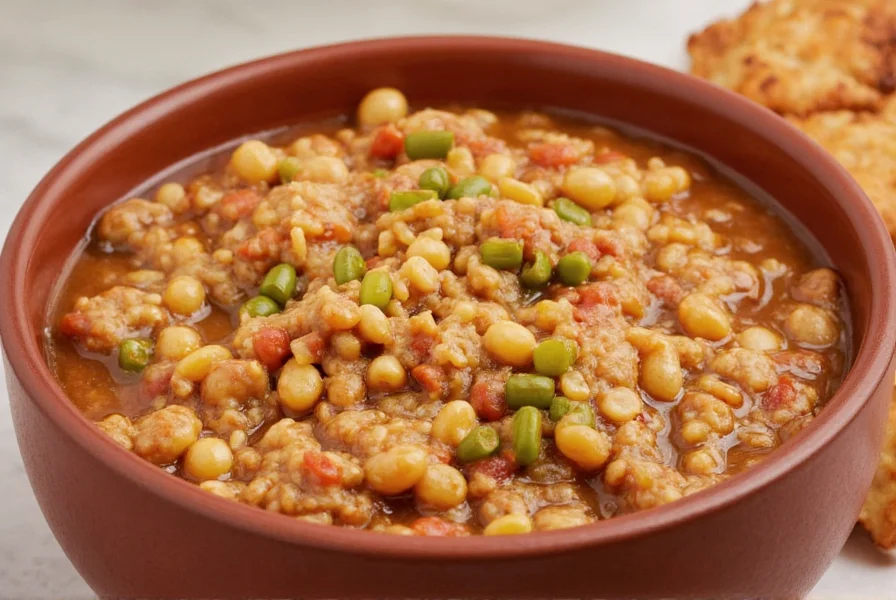File powder (pronounced "fee-lay") is a spice made from dried and ground sassafras leaves, used primarily in gumbo as a thickener and flavor enhancer. It's a key ingredient in traditional Creole and Cajun cuisine, providing an earthy, herbal note and helping achieve the dish's signature consistency.
Table of Contents
- What Is File Powder?
- The Role of File in Gumbo
- How to Use File Powder Like a Pro
- Storage Tips to Keep File Fresh
- Buying Guide: Choosing the Best File Powder
- Frequently Asked Questions
- Final Thoughts

What Is File Powder?
File powder, pronounced "fee-lay", is made from the dried and ground leaves of the sassafras tree (Sassafras albidum). Native to North America, sassafras has been used for centuries by Indigenous peoples and later adopted by Creole and Cajun cuisines — particularly in dishes like gumbo.
Historically, file was not only a flavor enhancer but also valued for its medicinal properties. However, modern cooks mostly appreciate it for its unique taste and thickening ability.

Key Characteristics of File Powder:
- Flavor Profile: Earthy, herbal, slightly peppery, with hints of citrus.
- Texture: Fine, silky powder similar to cornstarch.
- Function: Thickener and flavor booster.
The Role of File in Gumbo
Gumbo is a rich, layered stew that combines proteins (like shrimp, chicken, or sausage), the holy trinity (onion, bell pepper, celery), and a roux base. While filé isn't essential in every version, many traditional recipes call for it as a final touch.
Why Add Filé to Gumbo?
| Purpose | Description |
|---|---|
| Thickener | Filé acts as a natural thickening agent when stirred into hot liquid. It adds body without altering the flavor profile significantly. |
| Flavor Enhancer | It imparts an earthy, root-like flavor that complements dark roux and smoked meats beautifully. |
| Traditional Touch | Using filé connects your dish to its deep roots in Choctaw and Creole cooking traditions. |

How to Use File Powder Like a Pro
Using filé powder isn’t hard, but there are a few important rules to follow if you want the best results:
- Add at the end: Filé should never be added during cooking. Doing so can cause it to clump and become stringy. Always stir it in once the gumbo is off the heat.
- Start small: A little goes a long way. Begin with about ½ teaspoon per serving, then adjust to taste.
- Stir well: Mix thoroughly to avoid lumps. If needed, mix it into a small amount of broth first before adding it back into the pot.
- Let it rest: Some recipes suggest letting the gumbo sit for 5–10 minutes after adding filé. This allows the texture to mellow and thicken further.

Common Mistake to Avoid:
Never add filé directly to a simmering or boiling pot — it will seize up and turn gummy. Always remove the gumbo from the heat before stirring it in.
Storage Tips to Keep File Fresh
Because file powder is delicate and aromatic, proper storage is crucial for preserving both flavor and quality.
- Airtight container: Store in a sealed jar or resealable bag away from light and moisture.
- Cool, dark place: A pantry shelf or spice drawer works best. Heat and sunlight can degrade the flavor over time.
- Use within a year: Unlike salt or black pepper, file doesn’t last forever. Aim to use it within 6–12 months for maximum potency.
- No refrigeration needed: Moisture from the fridge can ruin the powder and cause clumping.

Buying Guide: Choosing the Best File Powder
When shopping for file powder, not all products are created equal. Here's how to choose the best quality for your kitchen:
Things to Look For:
- Ingredients list: Should contain only 100% pure sassafras leaf powder — no fillers or additives.
- Color: Fresh file powder is vibrant green. Dull or brownish tones indicate age or poor storage.
- Packaging: Choose brands that offer resealable packaging or tightly sealed containers to protect freshness.
- Brand reputation: Stick with trusted spice suppliers or specialty Creole/Cajun companies.
Top Recommended Brands:
| Brand | Features | Best For | Price Range |
|---|---|---|---|
| Zatarain’s File Powder | Pure, finely ground sassafras; trusted name in Southern cuisine | Everyday gumbo lovers | $ |
| Old Courthouse Creole Seasoning Co. | Small-batch, hand-ground from sustainably harvested sassafras | Chefs and serious foodies | $$ |
| The Spice Hunter Organic File Powder | Organic certified; smooth texture and clean finish | Health-conscious cooks | $$ |
| Mother In Law’s File Powder | Locally sourced; artisan-grade quality | Unique gift or boutique collection | $$$ |

Where to Buy:
- Specialty spice shops
- Local markets in the South (especially New Orleans)
- Online retailers (Amazon, Etsy for handmade versions)
- Some grocery stores with international sections
Frequently Asked Questions
What is file powder exactly?
File powder is a culinary spice made exclusively from dried and finely ground leaves of the North American sassafras tree (Sassafras albidum). In gumbo, it serves as both a thickening agent and flavor enhancer, delivering a distinctive earthy, herbal note that defines authentic Creole and Cajun versions of the dish.
How is file pronounced in gumbo contexts?
Despite the spelling, file in gumbo is pronounced "fee-lay" (not like the English word "file"). This reflects its French-Creole origins, where it's called "filé" from the Choctaw word "komma" meaning "to thicken."
What is file powder for gumbo specifically used for?
File powder serves three critical purposes in gumbo: 1) It thickens the stew naturally without altering the roux base, 2) It adds a signature earthy flavor that complements smoked meats and seafood, and 3) It connects the dish to its Indigenous Choctaw roots, where sassafras leaves were traditionally used as thickeners.
Can I substitute file powder?
Yes, though none replicate the exact flavor. You can use:
- Okra: Adds similar viscosity and thickness. Ideal for vegetarian versions.
- Cornstarch or flour: Effective thickeners but lack the herbal complexity.
- Arrowroot powder: Provides gentle thickening with neutral flavor.
Is file powder safe to eat?
Commercially sold file powder is safe. While raw sassafras contains safrole (a compound restricted by the FDA), modern processing removes most safrole. Reputable brands comply with FDA limits, making contemporary file powder safe for culinary use in normal quantities.
Do I need file in my gumbo?
No — it's traditional, not mandatory. Many authentic gumbo recipes rely solely on roux and okra for thickening. File is particularly common in "gumbo filé" (a meat-and-sausage version), but seafood or chicken gumbos often omit it.
What happens if I add file while the gumbo is boiling?
Adding file to boiling liquid causes it to become stringy and gummy. Always remove the pot from heat first, then stir in file powder gradually. This prevents clumping and ensures smooth incorporation.
Can I use fresh sassafras leaves instead of powder?
While traditional, fresh leaves require proper drying and grinding to avoid bitterness. Most home cooks find commercially prepared powder more reliable for consistent texture and flavor. Fresh leaves also carry higher safrole content, making regulated powder safer.

Final Thoughts
So, what is file for gumbo? It’s more than just a seasoning — it’s a cultural touchstone, a flavor booster, and a thickener rolled into one. Whether you're a weekend cook experimenting with Southern flavors or a seasoned chef recreating classic Creole gumbo, filé powder is worth keeping in your spice arsenal.
Remember to treat it with care: store it properly, add it at the right time, and don’t skimp on quality. With a sprinkle of filé, your gumbo will not only taste better — it’ll feel more authentic too.
Now go forth and make that gumbo sing — with a dash of file!











 浙公网安备
33010002000092号
浙公网安备
33010002000092号 浙B2-20120091-4
浙B2-20120091-4